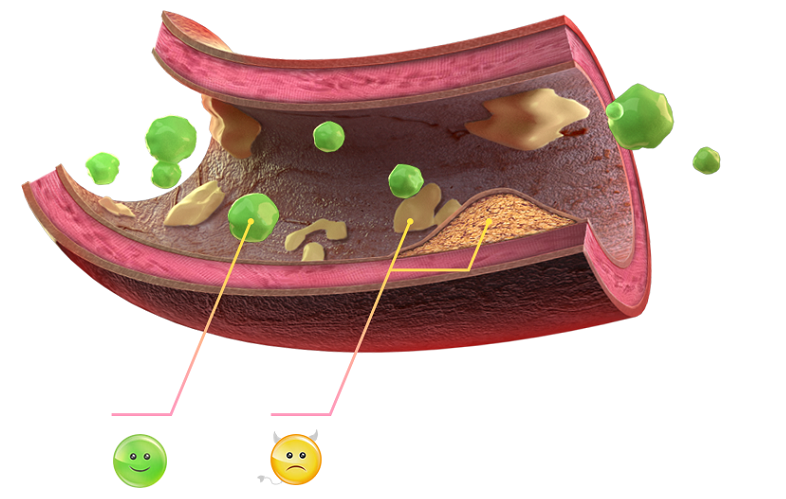The coefficient or atherogenic index - what is it and what does it mean? Read about this in the article.
Contents
- What is a coefficient, atherogenicity index in a biochemical blood test?
- What shows a high atherogenic coefficient in a biochemical blood test?
- The norm of the atherogenicity coefficient, as an atherosclerosis indicator, in women and men by age: table
- How to calculate the ka: calculation of the atherogenicity index by Klimov and Friedwald, formula
- Increased general cholesterol with a normal atherogenic index: reasons, what does it mean?
- The atherogenicity index is norm, and poor cholesterol is increased: what does this mean?
- How to lower the atherogenicity index (ka): drugs, folk remedies
- Diet with an increased atherogenicity coefficient: Rules, table of atherogenicity indices of fat
- Cholesterol increase: List
- Cholesterol reducing products: List
- The coefficient of atherogenicity in the blood is lower than the norm: reasons, what to do?
- Video: blood test: bad and good cholesterol
Doctors often appoint us to take tests without explaining what the result will indicate and why it is needed. It is clear that a biochemical blood test is needed to determine health indicators. But some lines as a result are incomprehensible to ordinary people. For example, the coefficient or atherogenic index - what it means and what it indicates. Let's understand this issue in the article below.
What is a coefficient, atherogenicity index in a biochemical blood test?
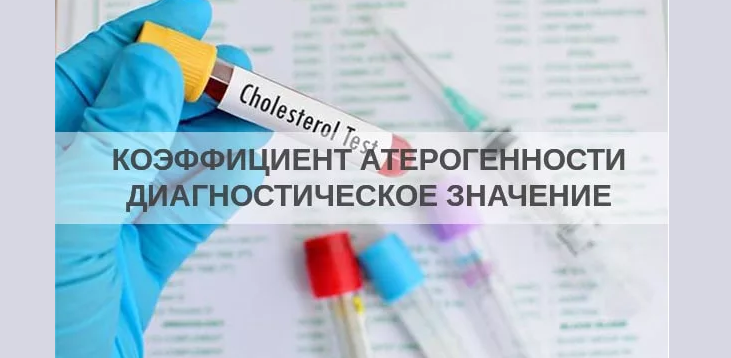
In a simple language, we can say that the coefficient or atherogenicity index in a biochemical blood test is information that displays the ratio of lipid fractions. Such a coefficient helps to evaluate the risks of heart and vascular diseases.
It is worth knowing: The study can be carried out when taking a biochemical blood test, as well as during suspicions of the presence of a disease. This analysis is prescribed specifically to determine some diseases associated with the human cardiovascular system.
The atherogenicity coefficient shows the amount of harmful cholesterol through which you can determine whether the patient has a risk of pathology or not.
- Cholesterol is a similarity of fat, which is necessary for the body for the operation of various systems.
- It participates in the formation of new cells, as well as in the production of various hormones, without which the life of the human body is impossible.
Harmful cholesterol forms a blockage of blood vessels, which can cause poor blood circulation in the vessels and failures in the work of the heart.
What shows a high atherogenic coefficient in a biochemical blood test?

It is clear that as a result of this analysis, the index may be within normal limits. It can also be reduced or increased. In this case, doctors prescribe additional studies. What shows a high atherogenic coefficient in a biochemical blood test?
- If this indicator is increased, then it is urgent to take proper measures, otherwise there is a risk of blockage of blood vessels and the development of serious diseases in the body.
With increased, you need to take the following steps:
- Change the diet. Exclude fatty meat, animal fats, eggs from the menu.
- Eat more fruits, vegetables, greens that help reduce poor cholesterol.
- Change lifestyle, increase physical activity.
- If there is no way to play sports, then you just need to move more. Daily walking in the fresh air will perfectly affect the health of blood vessels.
- With a strong increase in the index, you need to consult your doctor and take the drugs that he prescribed.
It is important to understand that blockage of blood vessels is very dangerous and can lead to a heart attack or stroke. After 50 years It is necessary to especially carefully monitor the state of the cardiovascular system.
The norm of the atherogenicity coefficient, as an atherosclerosis indicator, in women and men by age: table
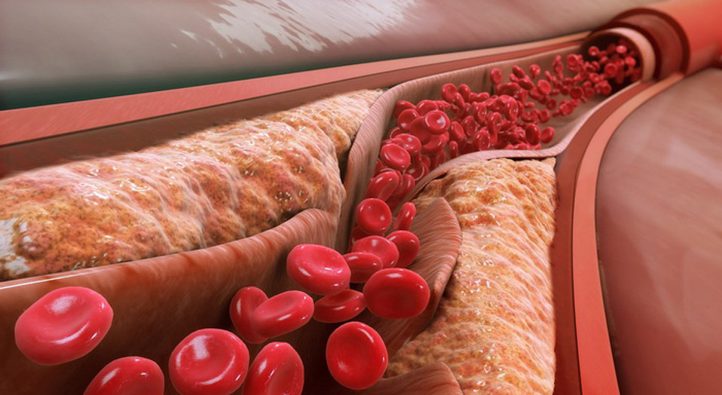
As mentioned above, increased ka is an indicator that indicates the presence of more poor cholesterol - LDL. Such fat alcohol in an excess can stick on the walls of blood vessels, even penetrate into their internal structures and form plaques. Because of this, the lumen in the vessels decreases, and such a blockage begins to interfere with normal blood flow.
- As soon as the duct is difficult, a problem associated with atherosclerosis may occur - this is a chronic disease of the arteries.
- It leads to unpleasant consequences, such as impaired lipid, protein metabolism, increased blood pressure, heart rhythm disturbance, and so on.
The norm of the atherogenicity coefficient, that is, the correlation between the harmful and useful cholesterol in the blood, should be close to permissible values.
Here is a table with the norm of atherogenicity coefficient, as an atherosclerosis indicator, in women and men by age:
| Age, gg | Atherogenicity index for men | Atherogenicity index for women |
| 5-10 years | 1,78 – 1,96 | 1,51 – 1,85 |
| 10-15 years | 1,8 – 1,99 | 1,83 — 2,24 |
| 15-20 years | 2,21 – 2,44 | 1,74 – 2,12 |
| 20-30 years | 2,5 – 3,17 | 1,82 – 2,11 |
| 30-40 years | 3,15 – 3,79 | 1,98 – 2,53 |
| 40-55 years | 3,29 – 3,98 | 2,04 – 2,71 |
| 55-70 years | 3,2 – 3,27 | 2,42 – 2,88 |
| Over 70 years old | 2,66 – 2, 94 | 2,37 – 2,89 |
How to calculate the ka: calculation of the atherogenicity index by Klimov and Friedwald, formula
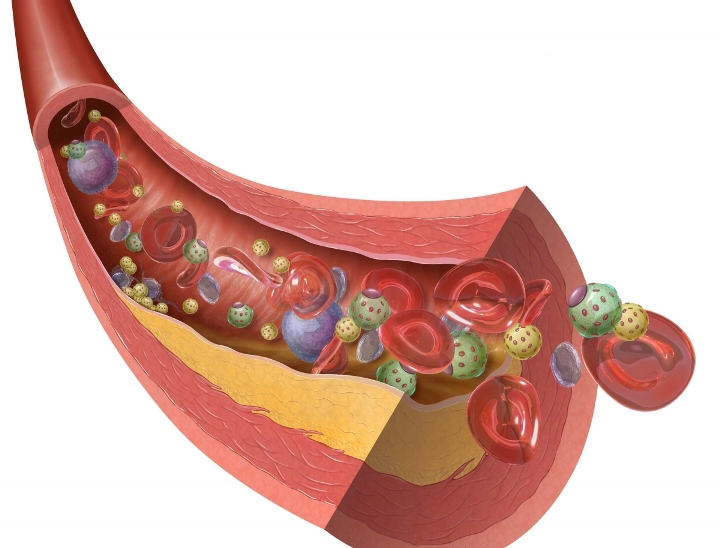
The most common way to determine this coefficient is the calculated method, which consists of two mathematical actions:
- KA \u003d (OHS - HDL CHC): HPA CHC
That is, this is the ratio of good and bad cholesterol:
- To calculate the ka, you must first calculate the total amount of harmful cholesterol in its various fractions. This is done in the laboratory.
- Specialists by counting, using special computer programs, from general cholesterol ( Ohs) subtract the indicator LDP.
- Then the level of harmful cholesterol is measured by dividing the result into the same indicator LDP.
It turns out an indicator that in a healthy person corresponds to a normal value. This method is called "Friedwald". There is another method for calculating the atherogenic index and it is called " according to Klimov ". It is similar to the previous one, but has more accurate values.
- Ka \u003d (LDL + LOPP) / LDPP
This formula requires an expanded analysis of lipids. Here LDP - This is an indicator of high density lipoproteins (poor cholesterol), and LOPP - Lipoproteins of very low density. More often in laboratories, the method is still used according to Klimov, since it is believed that it is more accurate and true.
Increased general cholesterol with a normal atherogenic index: reasons, what does it mean?
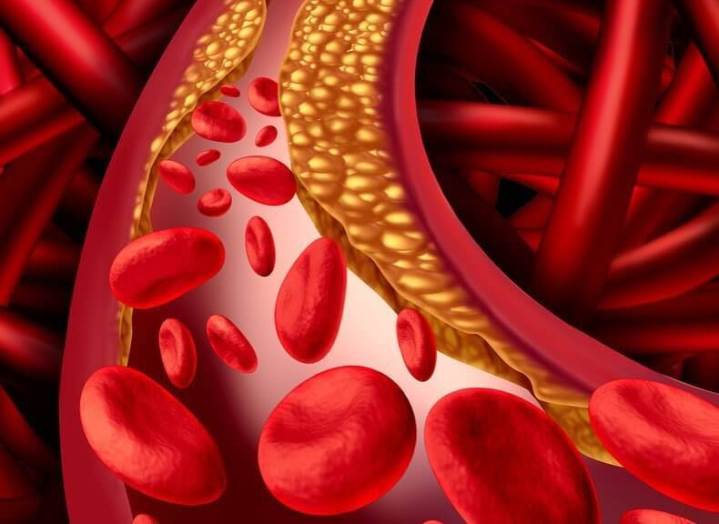
Among the reasons for increasing the level of total cholesterol with the normal value of the atherogenic index is distinguished:
- Improper nutrition, which includes a large amount of animal food.
- Reduced content of thyroid hormones and testosterone.
- Diabetes.
- Genetic predisposition.
- Vitamin D.'s deficiency D.
- The presence of excess weight.
- Alcohol abuse.
- Liver and pancreas.
What does it mean? Here are a few important aspects:
- With age, cholesterol increases in almost all people.
- This is due to the fact that the production of sex hormones (testosterone and the associated estrogen) is reduced, thereby their amount in the blood is reduced.
- In order to prevent an increase in the indicator, it is necessary to maintain hormones normally and carry out the therapy of endocrine diseases in time.
- High cholesterol at a young age is most likely associated with an irregular diet.
The risk of detecting increased cholesterol increases significantly in the presence of several provoking factors. Improper nutrition and the presence of excess weight are enough to ensure that the total cholesterol becomes higher, even if the atherogenicity index is normal.
The atherogenicity index is norm, and poor cholesterol is increased: what does this mean?
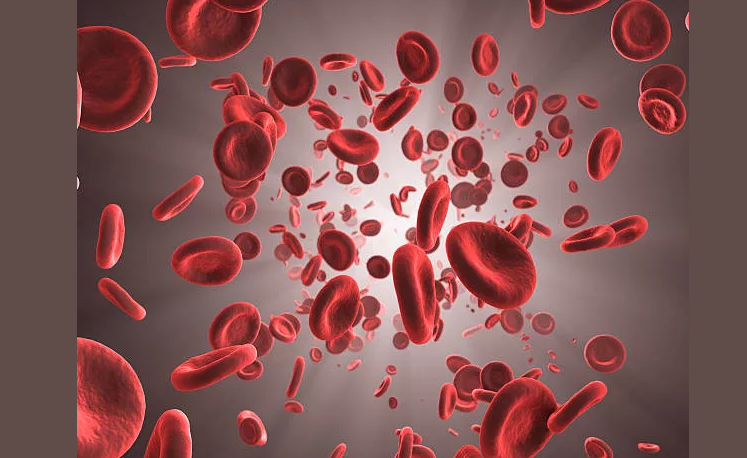
Not all cholesterol in the human body is bad. It is produced by the liver, kidneys, as well as some sex glands. The rest of the cholesterol enters the blood with the food that a person takes. There are several reasons why poor cholesterol rises, if the atherogenicity index is normal - this is what this means:
- Excess weight can raise the level of poor cholesterol and cause health problems.
- Perhaps your diet is full of saturated fats of animal origin, which raise the level of poor substance.
- The lack of an active lifestyle also affects the ratio of high -quality cholesterol to the harmful. The consequence of this may be a blockage of blood vessels.
- Age after 50 years It is risky for people who have problems with cholesterol.
- Perhaps the reason for increasing poor cholesterol and, accordingly, blockage of blood vessels, may be heredity.
If your relatives had problems with the cardiovascular system, then you also need to monitor your health.
How to lower the atherogenicity index (ka): drugs, folk remedies
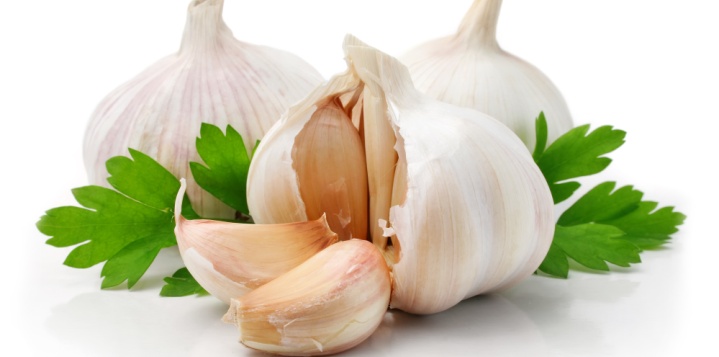
As mentioned above, the index or atherogenicity (KA) coefficient shows the level of poor cholesterol, which is harmful to the human body and leads to blockage of blood vessels. Moreover, not only the vessels of the brain suffer, but also the heart and other important organs. How can this indicator be reduced?
- It is necessary to change the lifestyle, since the increased level of bad cholesterol is the result of bad habits.
- Refuse smoking, alcohol.
- Control the sugar level and blood pressure. You also need to play sports and monitor meals.
- Exclude fatty meat and other products with animal fats from the menu. High fat dairy products. Margarine and mayonnaise, sugar and all quick carbohydrates (rolls, cakes, cakes, cookies) also need to be sent to the garbage basket.
- Slow carbohydrates, proteins, as well as beneficial fats of plant origin should include in power.
- Do not forget about fruits and vegetables, which should be quite quantity.
Medicines from the group of hypolipidemic can normalize cholesterol:
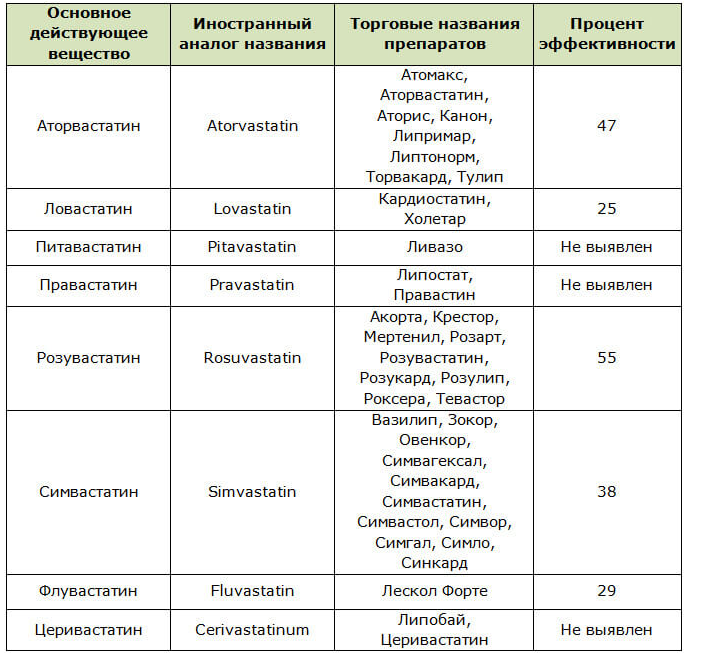
Important: Such drugs are prescribed strictly under the supervision of a doctor.
Also in the treatment, fibers and drugs with nicotinic acid are used:
- Niacin
- Vitamin B3
- Vitamin RR
- Antipellagric vitamin
- Omega Forte
- Doppelgerz Omega
- Pumpkin
- Lipoic acid
- Sitopren
In severe cases, sorbents are used to cleanse blood from harmful cholesterol:
- Polyphepan
- Polysorb
- Enterosgel
- Smecta and others
Good food sorbents include bran. They just need to be steamed with boiling water and added to cereal or first dishes. Folk remedies for increasing blood cholesterol include:
Medicinal plants:
- Golden mustache
- Liquorice root
- Sophora fruits
- Inflorescences of hawthorn
- Linden flowers
- Dandelion root
- Alfalfa
- St. John's wort
The healing decoction is being prepared:
- 1 tablespoon crushed and dried raw materials are poured with a glass of boiling water.
- Insist the product during 20 minutes.
- Then squeeze and drink 1/3 cup 3 times a day.
Flax seeds and oil:
- Flax seeds can be added to food by 1 teaspoon.
- Flax oil use no more 1-2 teaspoons Before each meal.
GARLIC:
- Tibetan treatment: 300 grams Grind and pour garlic 300 ml of alcohol. Insist a week and then drink, starting with 1 drop per day, increasing every day and bringing the reception up to 15 drops in a day. Then begin to reduce 1 drop reversed. So you can be treated no more often 2-3 times in year.
- Garlic oil - Clean the middle head of the garlic and pour the half liters of vegetable oil. Add such oil to the dishes at each meal.
- Garlic with lemon — 2 heads garlic Clean and chop together with 2 lemons. Pour 1.5 liters boiled water and put in the refrigerator. In 3 days Strain the infusion and drink half a glass at each meal.
Honey and propolis:
- 50 grams Propolis freeze, chop and warm in a water bath so that it melts.
- Add 200 grams honey and stir.
- Use the tool for 1 teaspoon On an empty stomach, washed down with water or tea.
Drinks that reduce cholesterol:
- Tomato juice
- Green tea
- Ginger tea
- Cocoa
- Topinamybur tea (earthen pear)
- Kisel from buckwheat
Sokotherapy:
- Drink freshly squeezed juices in the morning between breakfast and lunch.
- Society helps to cleanse the intestines and blood of harmful deposits and cholesterol.
VEGETABLES:
- Vegetables are better to eat green. They are more useful and reduce cholesterol.
- Tomatoes, carrots, white cabbage are also reduced in blood.
FRUITS AND BERRIES:
- Fruits and berries use acidic.
- With increased cholesterol, cranberries, lingonberries, blueberries, kiwi, grenade and cherries helps well.
Try to eat vegetables and fruits for the season. This will protect your body from obtaining a large number of nitrates, which will protect the liver and help it remove harmful cholesterol from the body.
Diet with an increased atherogenicity coefficient: Rules, table of atherogenicity indices of fat

The correct diet with an increased atherogenic coefficient is an opportunity to improve health. If you constantly consume sausage, butter, pork and other fatty products, then this can create prerequisites for increasing ka. Therefore, it is important in order to be healthy, to eat right. Here are a few more power rules:
- Exclude animal fats contained in fatty meat, sala, sausages, and confectionery from the diet.
- Give preference to low -fat dairy products, cheese, broinze, olive oil oil, low -fat varieties of meat and fish.
- Also in the diet there should be polyunsaturated fatty acids. They are found in vegetable oils, nuts, fish.
- Complex carbohydrates and fiber are also needed. Therefore, cereal, bran, fruits, vegetables should be in the diet.
- It is important and not overeat. From the table you need to go out with a slight feeling of hunger.
- Still drink a lot of water. It removes toxins and even excess fats from the body, but provided that the metabolism is correct.
To know which products are useful for increased cholesterol, and which should be excluded from the diet, you need to know their atherogenicity index. You will find all the necessary information in the table:
| Name of food | IA |
| Mutton | 1,00 |
| Beef | 0,8 |
| Pork | 0,52 |
| Bird meat | 0,5 |
| Other types of meat | 0,4 |
| horsemeat | 0,65 |
| Meat products | 0,65 |
| Sunflower oil | 0,07 |
| Dairy | 2,03 |
| Fish | 0,28 |
| Coconut oil | 13,63 |
| Palmoyard oil | 5,7 |
| Palm oil | 0,88 |
| Olive oil | 0,14-0,16 |
| Soybean oil | 0,13 |
| Sunflower oil | 0,07 |
| Linseed oil | 0,07 |
| Spread | 0,35 |
| Butter | 2,13 |
The table shows that, for example, of all meat products, lamb has the largest atherogenic index. This indicates that it is the most useful of all the type of meat. Pork, on the contrary, has the lowest values, which indicates that when using it, the risk of coronary pathologies is increased.
Cholesterol increase: List

It is not enough to know the atherogenicity index, it is also necessary to have an idea of \u200b\u200bwhich products increase cholesterol. Here's a list:
- Fast food -This is food with a huge cholesterol content, since it is very rich in transfers, which, in addition to cholesterol, are the cause of atherosclerosis and other diseases.
- Animal products. Many dairy products and meat contain many saturated and trans fats.
- Eggs They contain a large amount of cholesterol, about two thirds of the average daily norm for an adult.
- Ice cream - One cup of this classic frozen dessert contains more fat than a hamburger and french fries. Therefore, people who want to reduce cholesterol should be avoided at all.
- Cakes They are poorly affected by cholesterol, as they have a lot of saturated fats.
- Bakery products In general, in particular, goods purchased in the store contain a lot of cholesterol. They are better to avoid if you want to maintain an acceptable level of cholesterol.
- Seafood - In some seafood, a high level of cholesterol, for example, Omar contains 61 gr. cholesterol.
- Alcohol. It contains a lot of sugar, which can have the same negative effect on cholesterol as fat. The risk of alcohol varies depending on the type of drink.
If you avoid the use of these products, then your cholesterol level will be close to normal.
Cholesterol reducing products: List

If cholesterol is already high, then you should consult a doctor. The doctor will prescribe status preparations that will regulate the level of this substance in the blood. You can also help yourself by using food that reduce blood cholesterol. Here is their list:
Products containing vegetable fats. Reduce cholesterol by 20%:
- Sunflower oil
- Olive oil
- Avocado
- Sunflower seeds
Grain products that reduce cholesterol to 15%:
- Bran
- Flax-seed
- Barley
- Pearl barley
Nuts normalize cholesterol levels by 10%:
- Almond
- Peanut
- Walnuts
- Pistachios
Red fruits and vegetables contain lycopine pigment, which reduces cholesterol by 18%:
- Tomatoes
- Red Apple
- Strawberry
- Cherry
- Bulgarian pepper
- Pomegranate
- Sweet cherry
The following products also lower cholesterol:
- Green tea
- Dark chocolate with 70% cocoa powder
- Kiwi raw, with a peel
- Sea fish, salmon
- Mushrooms
- Dairy products (cottage cheese, milk)
- White meat (chicken, turkey)
- Egg white
- Citrus fruits (orange, lemon)
- Yogurt
- Beans and beans
- Turmeric
- Sweet potatoes - Jerusalem artichoke
As you can see, there are a lot of useful products and you can make a good and diverse menu for proper nutrition with high cholesterol.
The coefficient of atherogenicity in the blood is lower than the norm: reasons, what to do?

It happens that, according to the results of the analysis, the coefficient of atherogenicity in the blood is lower than the norm. Why could it be? These are the reasons:
- The patient was lying while passing the analysis.
- The person was too tired as a result of excessive loads on the body.
- Special diets where a person feeds on low -calorie foods without fat.
- Before passing the analysis, the patient took antifungal drugs, estrogens.
- The patient recently suffered a serious illness or surgery.
How to normalize atherogenicity, what to do? Here are some tips:
- To normalize this coefficient, you need to carefully monitor the nutrition.
- It is important to alternate the vacation work so that there is no strong fatigue, especially after heavy physical exertion.
- It is necessary to wait with bad habits at least before the test.
- An incorrect delivery procedure may also be reflected on the results.
Now you know everything about the coefficient of atherogenicity in the blood, as well as how to eat so that this indicator and blood cholesterol are normal. Good luck!

